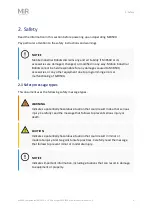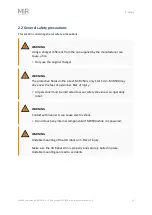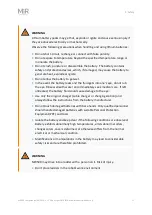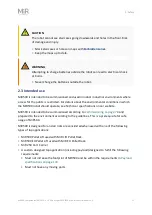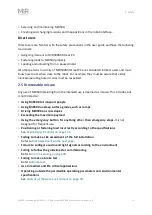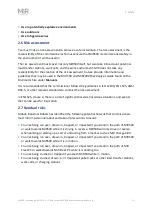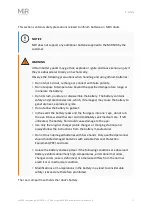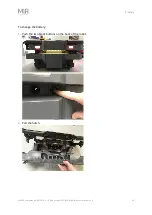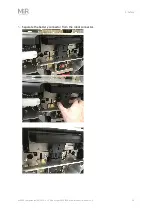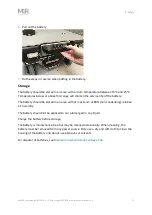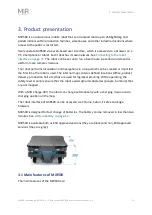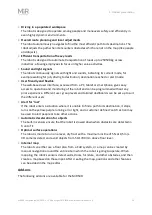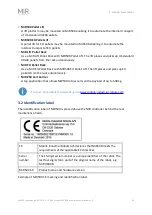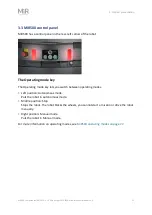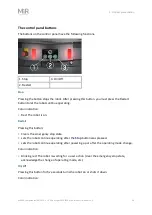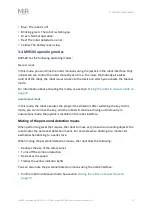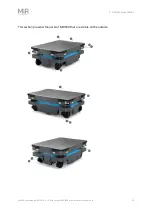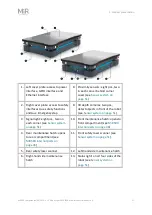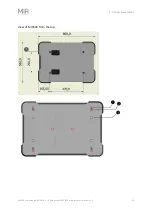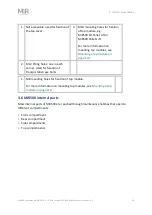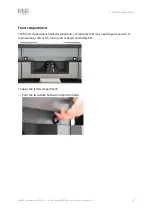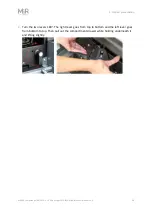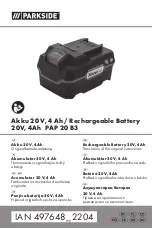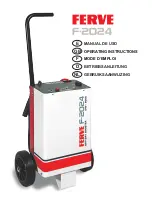
3. Product presentation
MiR500 User guide (en) 09/2019 - v.1.3 ©Copyright 2018-2020: Mobile Industrial Robots A/S.
23
•
Driving in a populated workspace
The robot is designed to operate among people and maneuvers safely and efficiently in
even highly dynamic environments.
•
Overall route planning and local adjustments
The robot autonomously navigates to find the most efficient path to its destinations. The
robot adjusts the path when it encounters obstacles which are not on the map (like people
and objects).
•
Efficient transportation of heavy loads
The robot is designed to automate transportation of loads up to 250500 kg across
industries, allowing employees to focus on higher value activities.
•
Sound and light signals
The robot continuously signals with light and sounds, indicating its current mode, for
example waiting for job, driving to destination, destination reached or alert mode.
•
User friendly and flexible
The web-based user interface, accessed from a PC, tablet or smartphone, gives easy
access to operation and monitoring of the robot and can be programmed without any
prior experience. Different user group levels and tailored dashboards can be set up to suit
the different users.
•
Alert for ‘lost’
If the robot enters a situation where it is unable to find a path to its destination, it stops,
turns on the yellow-purple running error light, and a customer defined ‘catch’ action may
be used to alert people or take other actions.
•
Automatic deceleration for objects
The built-in sensors ensure that the robot is slowed down when obstacles are detected in
front of it.
•
Optimal surface operations
The robot is made to run on a level, dry floor with a maximum incline of 5% at 0,5 m/s.
3D cameras detect and avoid objects from 50-1700 mm above floor level.
•
Internal map
The robot can either use a floor plan from a CAD system, or a map can be created by
manual navigation around the entire site in which the robot is going to operate. When
mapping, the robot’s sensors detect walls, doors, furniture, and other obstacles, and then
create a map based on these input. After creating the map, positions and other features
can be added in the map editor.
Add-ons
The following add-ons are available for the MiR500:

